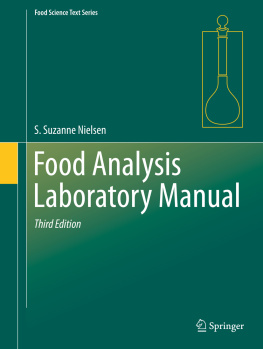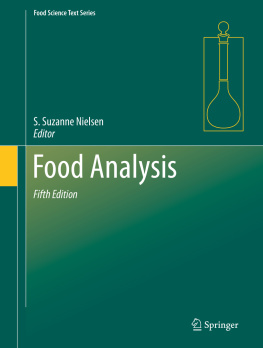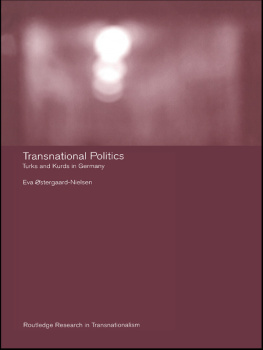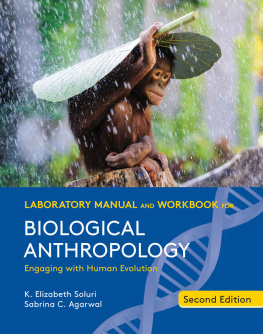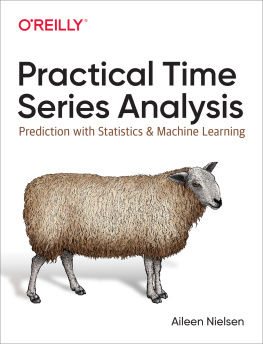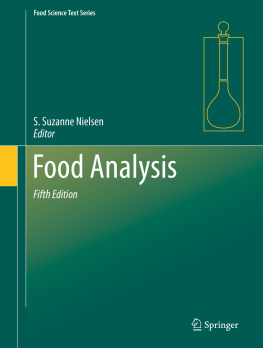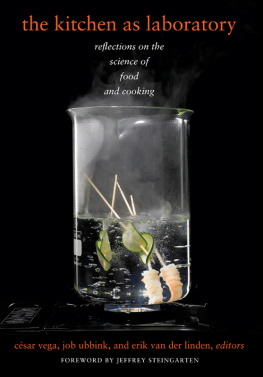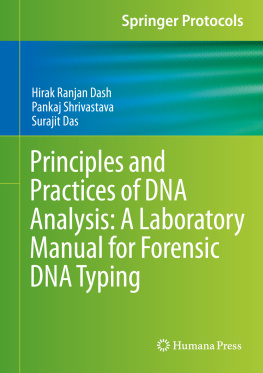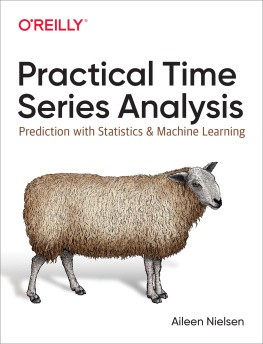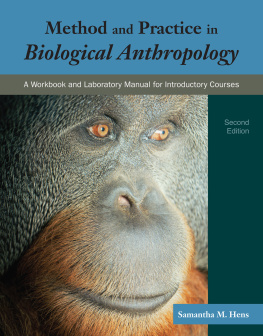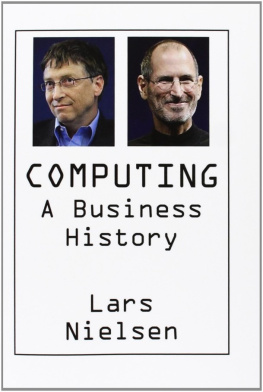S. Suzanne Nielsen - Food Analysis Laboratory Manual
Here you can read online S. Suzanne Nielsen - Food Analysis Laboratory Manual full text of the book (entire story) in english for free. Download pdf and epub, get meaning, cover and reviews about this ebook. year: 0, publisher: Springer International Publishing, genre: Children. Description of the work, (preface) as well as reviews are available. Best literature library LitArk.com created for fans of good reading and offers a wide selection of genres:
Romance novel
Science fiction
Adventure
Detective
Science
History
Home and family
Prose
Art
Politics
Computer
Non-fiction
Religion
Business
Children
Humor
Choose a favorite category and find really read worthwhile books. Enjoy immersion in the world of imagination, feel the emotions of the characters or learn something new for yourself, make an fascinating discovery.
- Book:Food Analysis Laboratory Manual
- Author:
- Publisher:Springer International Publishing
- Genre:
- Year:0
- Rating:3 / 5
- Favourites:Add to favourites
- Your mark:
- 60
- 1
- 2
- 3
- 4
- 5
Food Analysis Laboratory Manual: summary, description and annotation
We offer to read an annotation, description, summary or preface (depends on what the author of the book "Food Analysis Laboratory Manual" wrote himself). If you haven't found the necessary information about the book — write in the comments, we will try to find it.
Food Analysis Laboratory Manual — read online for free the complete book (whole text) full work
Below is the text of the book, divided by pages. System saving the place of the last page read, allows you to conveniently read the book "Food Analysis Laboratory Manual" online for free, without having to search again every time where you left off. Put a bookmark, and you can go to the page where you finished reading at any time.
Font size:
Interval:
Bookmark:
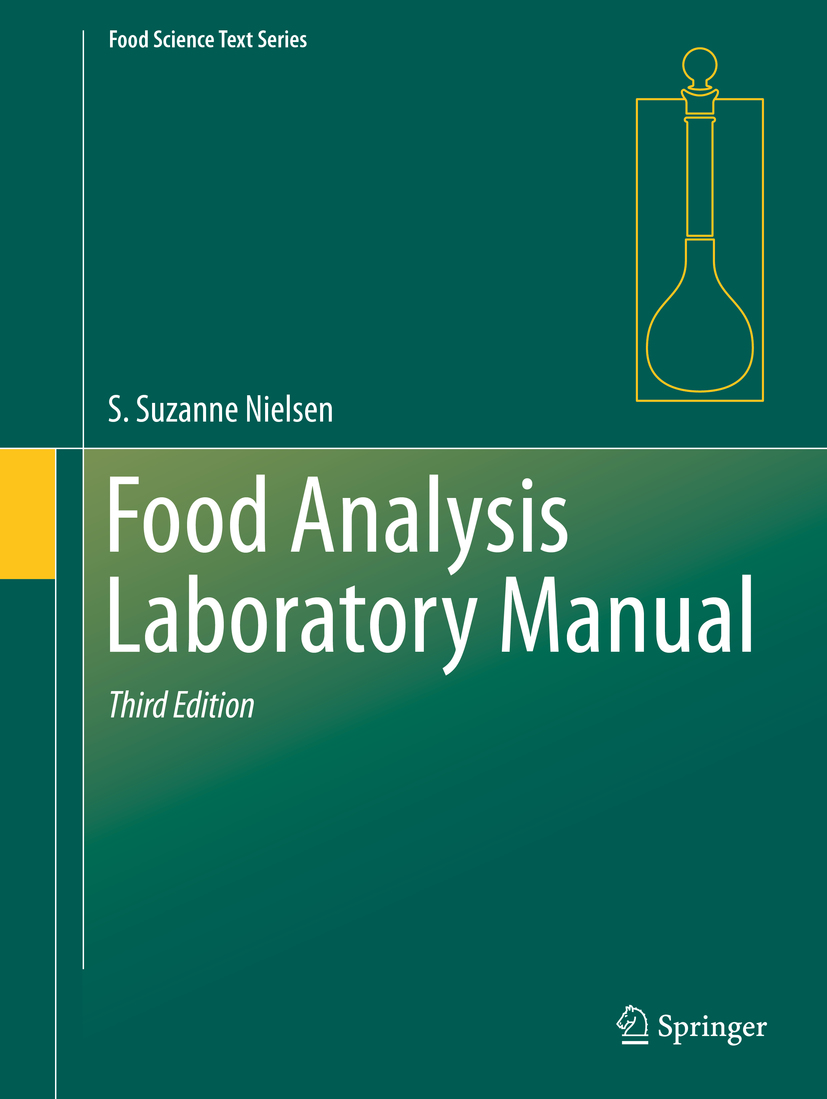
For other titles published in this series, go to www.springer.com/series/5999
The Food Science Text Series provides faculty with the leading teaching tools. The Editorial Board has outlined the most appropriate and complete content for each food science course in a typical food science program and has identified textbooks of the highest quality, written by the leading food science educators. Series Editor Dennis R. Heldman, Professor, Department of Food, Agricultural, and Biological Engineering, The Ohio State University. Editorial Board; John Coupland, Professor of Food Science, Department of Food Science, Penn State University, David A. Golden, Ph.D., Professor of Food Microbiology, Department of Food Science and Technology, University of Tennessee, Mario Ferruzzi, Professor, Food, Bioprocessing and Nutrition Sciences, North Carolina State University, Richard W. Hartel, Professor of Food Engineering, Department of Food Science, University of Wisconsin, Joseph H. Hotchkiss, Professor and Director of the School of Packaging and Center for Packaging Innovation and Sustainability, Michigan State University, S. Suzanne Nielsen, Professor, Department of Food Science, Purdue University, Juan L. Silva, Professor, Department of Food Science, Nutrition and Health Promotion, Mississippi State University, Martin Wiedmann, Professor, Department of Food Science, Cornell University, Kit Keith L. Yam, Professor of Food Science, Department of Food Science, Rutgers University

This Springer imprint is published by Springer Nature
The registered company is Springer International Publishing AG
The registered company address is: Gewerbestrasse 11, 6330 Cham, Switzerland
This laboratory manual was written to accompany the textbook, Food Analysis , fifth edition. The laboratory exercises are tied closely to the text and cover 21 of the 35 chapters in the textbook. Compared to the second edition of this laboratory manual, this third edition contains four introductory chapters with basic information that compliments both the textbook chapters and the laboratory exercises (as described below). Three of the introductory chapters include example problems and their solutions, plus additional practice problems at the end of the chapter (with answers at the end of the laboratory manual). This third edition also contains three new laboratory exercises, and previous experiments have been updated and corrected as appropriate. Most of the laboratory exercises include the following: background, reading assignment, objective, principle of method, chemicals (with CAS number and hazards), reagents, precautions and waste disposal, supplies, equipment, procedure, data and calculations, questions, and resource materials.
- Use of Introductory Chapters:
Chap. 1, Laboratory Standard Operating Procedures recommended for students prior to starting any food analysis laboratory exercises
Chap. 2, Preparation of Reagents and Buffers includes definition of units of concentrations, to assist in making chemical solutions
Chap. 3, Dilution and Concentration Calculations relevant for calculations in many laboratory exercises
Chap. 4, Use of Statistics in Food Analysis relevant to data analysis
Order of Laboratory Exercises: The order of laboratory exercises has been changed to be fairly consistent with the reordering of chapters in the textbook, Food Analysis , fifth edition (i.e., chromatography and spectroscopy near the front of the book). However, each laboratory exercise stands alone, so they can be covered in any order.
Customizing Laboratory Procedures: It is recognized that the time and equipment available for teaching food analysis laboratory sessions vary considerably between schools, as do student numbers and their level in school. Therefore, instructors may need to modify the laboratory procedures (e.g., number of samples analyzed, replicates) to fit their needs and situation. Some experiments include numerous parts/methods, and it is not assumed that an instructor uses all parts of the experiment as written. It may be logical to have students work in pairs to make things go faster. Also, it may be logical to have some students do one part of the experiment/one type of sample and other students to another part of the experiment/type of sample.
Use of Chemicals: The information on hazards and precautions in the use of the chemicals for each experiment is not comprehensive but should make students and a laboratory assistant aware of major concerns in handling and disposing of the chemicals.
Reagent Preparation: It is recommended in the text of the experiments that a laboratory assistant prepare many of the reagents, because of the time limitations for students in a laboratory session. The lists of supplies and equipment for experiments do not necessarily include those needed by the laboratory assistant in preparing reagents for the laboratory session.
Data and Calculations: The laboratory exercises provide details on recording data and doing calculations. In requesting laboratory reports from students, instructors will need to specify if they require just sample calculations or all calculations.
Even though this is the third edition of this laboratory manual, there are sure to be inadvertent omissions and mistakes. I will very much appreciate receiving suggestions for revisions from instructors, including input from lab assistants and students.
Font size:
Interval:
Bookmark:
Similar books «Food Analysis Laboratory Manual»
Look at similar books to Food Analysis Laboratory Manual. We have selected literature similar in name and meaning in the hope of providing readers with more options to find new, interesting, not yet read works.
Discussion, reviews of the book Food Analysis Laboratory Manual and just readers' own opinions. Leave your comments, write what you think about the work, its meaning or the main characters. Specify what exactly you liked and what you didn't like, and why you think so.

